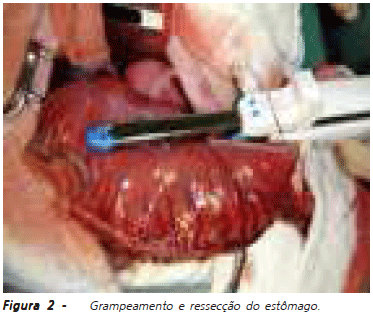OBJECTIVE: Novel experimental technique of intestinal lengthening with a gastric graft in swines is proposed. METHODS: Four male large white swines, weighing 15 to 20 kg and aging 50 to 60 days were underwent an intestinal lengthening using a gastric graft (Figure 1). Swines were re-operated to check the aspect of the lengthening surgery. At this time intestinal fragments of suture lines, respecting a 5 cm margin, were removed and sent to histological analysis. RESULTS: There wasn't any graft ischemia or necrosis, residual stomach was already dilated by the time of relaparotomies, regaining 50% of its original size. Only an intense atrophy of the gastric graft mucosa with no signs of necrosis at histological study (Figure 2). CONCLUSION: Lengthening using a gastric graft is technically feasible, with viability of the graft. Studies with swines with SBS in a larger co-hort will be necessary to analyze stomach graft function. In the future, this technique can be a bridge to intestinal transplantation.
Intestine; Stomach; Bioprosthesis; Swine




